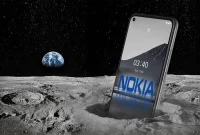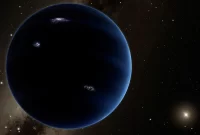The space is always full of surprises and every time interesting and dazzling facts about it are discovered. Space is astonishing in size, and the existence of trillions of celestial bodies in the billions of galaxies in space is almost incomprehensible to the human brain. Unbelievable facts that may not be without grace. Here are some of them.
The space is completely silent
There is no sound in space, meaning that the sound has no medium or way to travel in order to be heard. Astronauts use radios to communicate in space, and interestingly, radio waves can still be sent and received in space.
Interestingly, Venus is not the closest planet to the Sun and Mercury is closer, but on this planet, due to the absence of any atmosphere, the temperature is constantly fluctuating.
It is possible to live on Mars
Of all the planets in our solar system except Earth, Mars is one of the most likely to have the most hospitality for life. In 1986, NASA discovered fossils of microscopic organisms on a rock on Mars that could be evidence of life on Earth.
No one still knows how many stars there are in space
The vastness of space makes it impossible to accurately predict how many stars there are in space. At present, scientists and astronomers have only been able to make inaccurate estimates of the stars in the Milky Way galaxy, which is about 200 to 400 billion stars, and now imagine that with billions of galaxies in space, the stars available would be completely innumerable.
The famous comet Holly will not cross Earth until 2061
The Holly Comet was discovered by Edmund Halley in 1705. This famous comet was last seen in 1986 and only appears once every 75 to 76 years.A full set of NASA astronauts is $ 12 million, with backpack and control modules accounting for 70 percent of that cost.
Neutron stars spin 600 times per second
Neutron stars are known to be the densest and thinnest stars in the universe, and although they are only about 10 kilometers in radius, they may be several times the mass of the Sun. They can spin 600 to 712 times per second after birth due to a supernova explosion due to physical reasons.
A planet made of diamonds
Given the realities of space, this is a very impressive discovery. Research by Yale University scientists shows that the rocky planet 55 Cancri e, which has a radius twice the radius of the earth and a mass eight times greater, may have a surface of graphite and diamond. The planet is 40 light-years from Earth, but can be seen with the naked eye in the constellation of Cancer.
Food on the moon will last for up to 100 million years
The moon has no atmosphere, meaning there is no wind to clear the surface and no water to wash the footprints.
In Venus, one day is equivalent to one year on Earth
Venus or Venus has a slow rotation that takes 243 Earth days to complete one day. Venus orbits the Sun 225 days a day. The Andromeda Galaxy and the Milky Way will merge in another 3.75 billion years.
The Andromeda Galaxy is approaching the Milky Way, where our solar system is located, at a speed of approximately 110 kilometers per second, and the two will eventually collide to form a giant elliptical galaxy.
There is a huge source of water in space
Astronomers have discovered a massive cloud of water vapor that holds 140 trillion times the water of the Earth’s oceans some 10 billion light-years from Earth, making it the largest known water discovery.
The largest known steroid is 965 km wide
The dwarf planet Ceres was the first and largest object to be considered an asteroid and discovered by an Italian astronomer. This phenomenon is located in the asteroid belt between the orbit of Mars and Jupiter and makes up 33% of the total belt.
The moon may have been a piece of land
There is a hypothesis that when the Earth was a relatively young planet, it was hit by a giant object, which collided with a piece of Earth to create the moon; The piece then begins to rotate around the earth due to gravitational pull.
There are many amazing facts about the solar system that you have not even heard of. In this report, we have introduced some interesting and readable information about the solar system that you will be surprised to hear.
The solar system and outer space are not as attractive as you think, and its mysterious secrets can be dangerous to us.The production of film and television works in the horror and science-fiction genres is growing, which in some ways is a testament to humanity’s fear of the unknown secrets of the world. Like the Manifesto of Destiny, which drove American immigrants westward, the need to discover these unknowns is strongly felt in modern society.
The outer space of the earth and the solar system is one of the things that human beings are curious about and try to discover more facts about it. Here we are going to introduce you to some facts about the solar system that you have probably never heard of.
Space dinosaurs on the moon
No crew has landed on the moon since 1972, but fortunately technologies such as NASA’s lunar surveillance telescope and lunar reconnaissance orbiter can be used. The orbiter has been orbiting the moon since 2009, sending data to Earth.
According to scientists, the real bones of the dinosaurs were found on the moon, which seems to have been due to the meteorite hitting the ground and throwing them out of the Earth’s atmosphere and eventually reaching the surface of the moon. The moon has no atmosphere to create wind and dinosaur bone erosion, so they remain in their ideal condition.
Pluto is not a planet
You should know that Pluto is actually a dwarf planet. It is also interesting to know that there are many more than eight planets and one dwarf planet in the solar system. There are four official dwarf planets in the solar system, named Ceres, Haumia, Maki Maki, and Eris, respectively. Humans have known about the existence of the black dwarf Ceres since the 1800s. Maki Maki also has its own moon, and more interestingly, the dwarf planet Haumia has two moons.
Tectonically, Earth is not the only active planet
One of the most important events that led to the formation of our planet is the ever-changing tectonic plates. A process that began about 3.3 to 3.5 billion years ago and created mountains, islands, volcanoes, seawalls, and more. In fact, these processes can be considered as one of the several reasons for the existence of life on earth. In 2016, data from Mercury surface spacecraft showed that Mercury was shrinking due to these tectonic processes. This means that its formation has not ended in 4.6 billion years since the formation of the solar system.
Walking in space is not as good as you think
Every child dreams of becoming an astronaut before entering adulthood. But thanks to NASA and social media, we can become more aware of the situation astronauts are experiencing in space. Some things like tearing up in space and floating in cabinets seem really weird. Especially when the astronauts want to return to Earth after a long mission. Astronauts do not use their legs due to lack of gravity. Without the friction of walking, running and other activities, the astronauts’ skin softens and disappears over time. That’s why they do not change their socks for several days in a row. Because if they are not careful in removing the socks, the skin of the dead foot will spread everywhere.
The space is not as far away as it seems
We are not going to talk about how technically close we are to space travel here. We are talking about the very small space between the ground on which we walk and the boundary where space begins, which is known as our line of work. If you can get in your car and drive vertically at 60 mph, you can get to space in just one hour. In fact, from where you stand now, you are only 62 miles from our work line. The current record holder for the highest space jump is Felix Baumgartner, who jumped from a height of 39,000 meters during a project called Red Bull Stratus. It took him 90 minutes to get close to the atmosphere, but thanks to gravity, he reached the ground in 3 minutes and 48 seconds.
Jupiter’s storms
Anyone who has survived major storms can testify to how powerful these storms are. However, the worst storm to ever occur on Earth is a child’s play compared to the big red dot on Jupiter. About two to three planets could be completely immersed in the storm at this red dot. The storm winds an average of 270 miles per hour, but can reach up to 425 miles per hour around its oval edges. Keep in mind that the strongest storms recorded on Earth were only at 200 miles per hour and were few in number.
Hell in the Solar System
Humans certainly do not need to travel to this planet, but the scary thing is that Venus has fallen into this state due to the greenhouse effect. Venus is thought to have been habitable about 3 billion to 750 million years ago. Problems such as the melting of polar glaciers on Earth are similar to those of fully boiled Venus seas.
The solar system in middle age
Humans are born, they grow, they grow old, and then they die. These are simple facts. Our universe is theoretically 13.77 billion years old, and scientists estimate that our solar system is about 4.6 billion years old. They think the solar system will only remain in this corner of space for another 5 billion years. So it can be said that the solar system is in its middle age.
The sun devours us
The sun, the light that energizes and saves the earth, may one day cause our death. When the hydrogen needed to fuse a nucleus runs out, the nucleus shrinks and, conversely, turns into swollen stars from the outside. This growth expands to the point that it completely covers our earth, and before that, heat and radiation are released, completely burning everything on earth. The sun burns everything in the entire solar system. Only then will the sun become a white dwarf and no longer shine. At this time, the solar system, which was once lively, like most parts of space, becomes cold, calm and dead.



